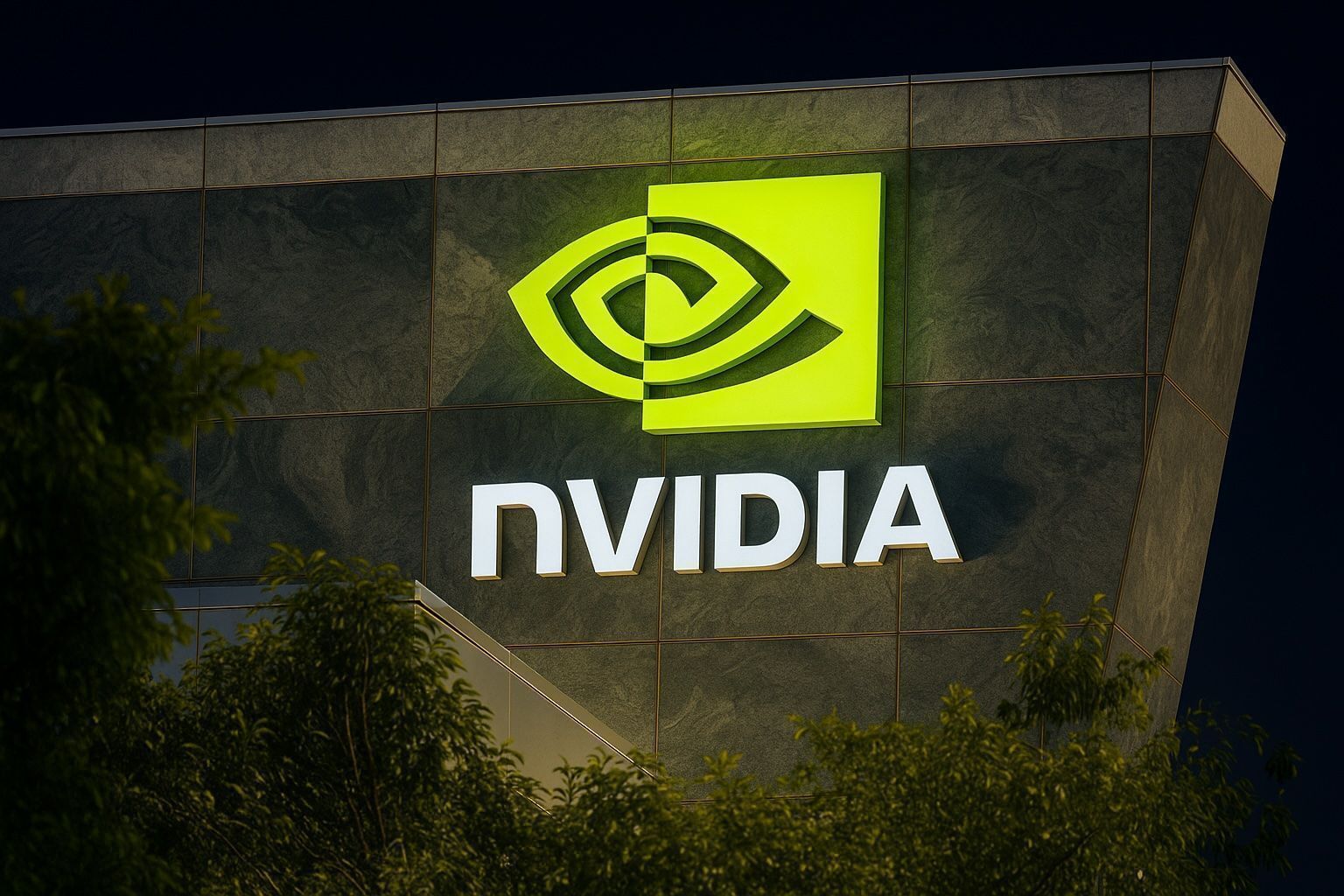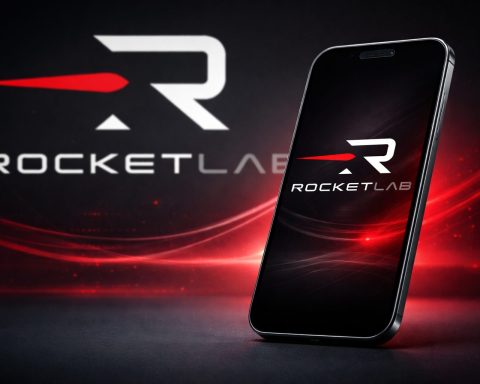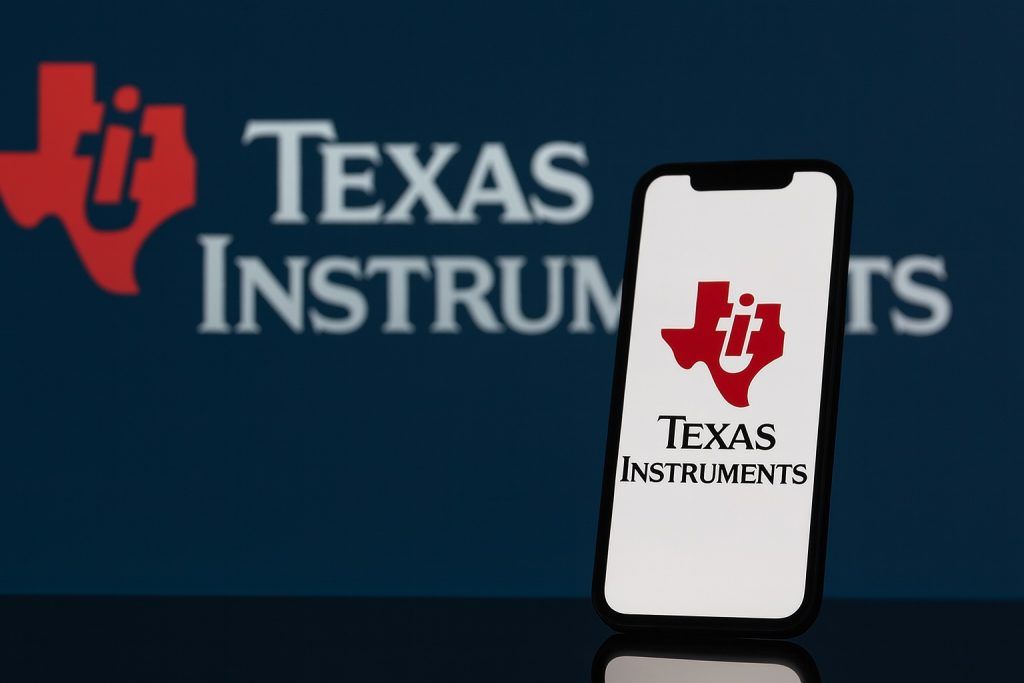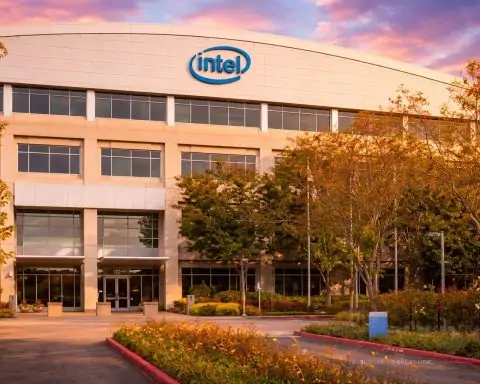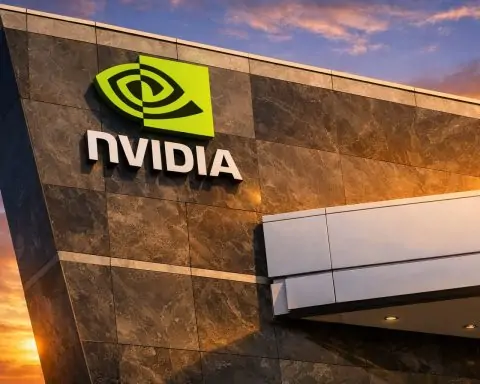What to Know Before Markets Open on October 20, 2025
- Nvidia’s China wipeout: CEO Jensen Huang revealed that Nvidia’s share of China’s advanced AI chip market has collapsed from roughly 95% to 0% due to U.S. export restrictions [1]. “At the moment, we are 100% out of China,” Huang said, calling the situation a dire loss of a once-major market.
- CEO slams export curbs: Huang criticized U.S. chip export bans as a strategic blunder, saying “I can’t imagine any policymaker thinking that’s a good idea – that whatever policy we implemented caused America to lose one of the largest markets in the world to 0%” [2]. He warned that what harms China can also harm the U.S., “and even worse,” urging a more nuanced approach [3].
- No China sales in outlook: Nvidia has now removed China from its revenue forecasts, assuming zero sales there going forward [4] [5]. “If anything happens in China – which I hope it will – it’ll be a bonus,” Huang noted [6]. Once, China contributed an estimated 20–25% of Nvidia’s data center revenue [7], underscoring how significant this market was.
- China’s push for self-reliance: In response to U.S. sanctions, Beijing barred its tech giants from buying Nvidia chips and accelerated support for domestic chipmakers. Chinese regulators told firms like Alibaba and ByteDance to halt testing or orders of Nvidia’s China-specific AI chips [8] [9]. Homegrown rivals – from Huawei’s new AI processors to startups like Cambricon – have rushed in, eroding Nvidia’s dominance [10] [11].
- Stock soars amid uncertainty: Despite losing China, Nvidia’s stock has been buoyed by booming global AI demand. The share price has surged roughly 30% in 2025 (after a 171% jump in 2024) [12], briefly propelling Nvidia above a $1 trillion market cap. Analysts still see Nvidia as the “unquestioned leader” in AI chips [13], but caution that surrendering the China market – once ~1/5 of its sales – could weigh on long-term growth unless policies change [14] [15]. Investors are watching whether U.S.-China tech tensions ease or if Chinese competitors start closing the gap.
U.S. Tech Ban Wipes Out Nvidia’s China Business
Nvidia’s once-dominant position in China’s AI chip market has been effectively wiped out by geopolitical forces. Jensen Huang, Nvidia’s co-founder and CEO, confirmed this dramatic reversal at an event in early October: “We went from 95% market share to 0%” in China, he said [16]. The plunge results directly from U.S. export bans that since 2022 have prohibited Nvidia from selling its most advanced GPUs – chips like the A100, H100, and newer H200 – to Chinese customers [17]. Huang attributed the collapse to these restrictions, bluntly calling the policy a “mistake” that is counterproductive to American interests [18] [19].
For Nvidia, the stakes were huge: China was the second-largest computing market in the world and once made up about a quarter of its data-center chip revenue [20]. Before the trade curbs, Nvidia commanded ~95% of China’s AI accelerator market. Even after initial U.S. rules took effect in 2022, Nvidia tried to hang onto China by offering scaled-down chips (like the A800 and H800) that met export limits. Nonetheless, its China market share had already slid to ~50% post-2022 [21]. Then, in 2023, Washington tightened the rules further, closing loopholes and blocking even those tailored chips [22]. By 2025, Nvidia’s attempts to create a compliant chip (the “H20” Hopper GPU) were stymied – the Trump administration halted H20 sales in April 2025, pending special licenses [23].
Huang recounted how these moves have “100%” pushed Nvidia out of China, effectively wiping out one of America’s largest tech export markets [24]. “In all of our forecasts, we’re assuming zero for China,” he said, meaning Nvidia no longer counts on any Chinese revenue when predicting its future [25]. The CEO expressed disbelief that U.S. policymakers consider this outcome desirable: losing access to such a vast market, he argued, hurts U.S. industry more than it helps. “I think it’s a mistake for the United States not to participate” in China’s tech ecosystem, Huang said, noting China’s importance as a “vibrant ecosystem” and major base of AI talent [26].
Beijing Strikes Back: Domestic Rivalry and Tech Decoupling
From Beijing’s perspective, Nvidia’s loss has been China’s gain – for its nascent chip industry. Chinese authorities have responded to U.S. sanctions with retaliatory measures and a redoubled push for self-sufficiency in semiconductors. Shortly after the U.S. blocked Nvidia’s top-tier chips, China’s Cyberspace Administration and other regulators reportedly banned domestic tech firms from buying even the scaled-down Nvidia chips that were allowed under U.S. rules [27] [28]. According to the Financial Times, companies including ByteDance (TikTok’s parent) and Alibaba were ordered to stop testing or purchasing Nvidia’s RTX 6000/6000D and other China-specific models [29] [30]. In essence, Beijing signaled that if advanced Nvidia GPUs are off-limits, Chinese buyers shouldn’t settle for the “watered-down” versions either – they should invest in local alternatives.
This edict dovetailed with a broader national drive to replace foreign chips with homegrown tech. In recent months, Chinese chipmakers and AI firms have unveiled domestic AI accelerators aiming to fill the void left by Nvidia. Industry giants like Huawei have reportedly developed workarounds – such as using networks of lower-end chips (“clustering”) to replicate high-end performance – and are touting new AI chip roadmaps [31] [32]. Startups such as Cambricon have seen their stocks rally as Chinese cloud providers pivot to indigenous silicon [33] [34]. Huang himself acknowledged this competitive shift, warning that barring Nvidia opens the door for Chinese rivals like Huawei to seize the market [35]. “Excluding Nvidia from China risks ceding the market to domestic competitors,” he cautioned [36] [37].
Notably, China has also weaponized its own leverage: rare earth minerals. In a tit-for-tat move, Beijing imposed strict limits on exports of critical rare earth elements needed for making high-end chips and electronics [38]. This was seen as retaliation against U.S. chip curbs – a reminder that China controls key parts of the tech supply chain (rare earths are essential for components like motors, magnets, and certain chip processes). The techno-nationalist standoff is cutting both ways: while U.S. companies lose the China market, U.S. restrictions are also forcing China to invest heavily in an independent tech stack, from advanced chips to materials. Over time, that could accelerate China’s tech capabilities, potentially eroding U.S. dominance in semiconductors. As Huang put it, “What harms China could oftentimes also harm America, and even worse” [39] – hinting that the decoupling in AI tech could backfire by spurring formidable new competitors and splitting the global innovation ecosystem.
Huang’s Call for Policy Rethink – and Half the World’s AI Talent at Stake
Jensen Huang is not alone in worrying about the fallout. He emphasizes that China is integral to the global AI community – with roughly “50% of the world’s AI researchers” based there [40]. Cutting off Chinese institutions from top U.S. chips could hamper collaboration and drive those researchers to develop on non-U.S. platforms. “It’s a mistake not to have those researchers build AI on American technology,” Huang warned [41] [42]. In other words, if Chinese AI scientists are forced onto domestic hardware and software, the U.S. could lose influence over the next wave of AI advancements. This concern speaks to the heart of the debate: balancing national security with technological leadership. The Biden administration began the export restrictions in 2022 citing security fears (keeping cutting-edge AI chips out of China’s military and surveillance systems) [43]. But Huang urges a more “nuanced” approach, suggesting that wholesale tech decoupling can “backfire… sometimes even in worse ways” for the U.S. [44] [45].
Huang’s stance is essentially a plea for policymakers to reassess. “Before we leap towards policies that are hurtful to other people, take a step back and…reflect on what are the policies that are helpful to America,” he said in the interview [46] [47]. He’s advocating for keeping bridges open, at least enough that American companies can continue engaging with China’s huge market and talent base – without, presumably, giving away core strategic tech. Some in Washington appear to agree: Reuters reported that President Donald Trump (now in his second term) hinted in August at the possibility of allowing Nvidia to sell more advanced chips to China under certain conditions [48]. In fact, a complex compromise was briefly reached over the summer: U.S. officials granted Nvidia and AMD special export licenses to sell the H20 chip to China, but on the condition that 15% of the revenue goes to the U.S. government [49] [50]. (President Trump argued this way China only gets older, scaled-back tech while the U.S. literally profits from the sales [51] [52].) Nvidia agreed to that unusual deal and by August secured a license for H20 – yet Chinese regulators still didn’t budge. Beijing’s agencies raised “security concerns” about H20, summoned Nvidia for questioning, and effectively froze any H20 shipments pending review [53] [54]. By late August, Nvidia confirmed it had yet to resume H20 deliveries to China despite the license [55].
Instead of easing the deadlock, China answered with more scrutiny. In September, China’s State Administration for Market Regulation launched a formal antitrust investigation into Nvidia’s past acquisition of Mellanox (an Israeli networking firm) [56] [57] – a move widely seen as pressure, given that deal closed in 2020. And as noted, China’s tech watchdog (CAC) went so far as to instruct Chinese companies to cancel orders of Nvidia’s chips that met U.S. export rules [58]. Huang has expressed disappointment but remains diplomatic: “We can only be in service of a market if a country wants us to be,” he said, adding that Nvidia will stay patient and “continue to be supportive of the Chinese government and Chinese companies as they wish” [59]. In short, the AI chip champion is in a holding pattern – locked out of China by U.S. rules, and simultaneously locked out by China’s own mandates, until the two superpowers find common ground.
Nvidia Stock and Forecast: Booming Business, But China Casts a Shadow
Despite these headwinds, Nvidia’s financial performance has been nothing short of extraordinary in the rest of the world. The company is riding an unprecedented AI boom, as its GPUs have become the de facto platform for cutting-edge AI models and data center expansion. Over the last two years, Nvidia’s stock has skyrocketed: it jumped 171% in 2024, and has climbed roughly 30% year-to-date in 2025 [60]. In fact, Nvidia briefly became one of the world’s most valuable companies – at times surpassing $1 trillion in market capitalization [61]. (One news outlet even touted Nvidia as “on track to become the first $5 trillion company” if its growth continued [62], though that remains speculative.) This investor enthusiasm is fueled by stunning earnings – Nvidia has posted record revenues thanks to insatiable demand for AI chips from cloud providers, firms building AI models, and even allies like Saudi Arabia racing to buy hardware [63] [64]. As one analyst quipped, “the chip landscape remains [Nvidia’s] world, with everybody else paying rent” [65] – underlining Nvidia’s dominance in the AI era. Outside of China, Nvidia reportedly still commands ~94% of the AI processor market [66], far ahead of any competitor.
However, the China choke-off does introduce uncertainty into Nvidia’s longer-term story. Losing access to an economy as large as China’s could cap Nvidia’s future growth trajectory, especially in data centers and cloud deployments where Chinese tech companies had been major customers. By one estimate, China (including Hong Kong) accounted for roughly $2.77 billion of Nvidia’s revenue in a recent quarter – before the latest rules took full effect – and those sales were down 24.5% year-on-year amid the crackdowns [67] [68]. Going forward, Huang’s guidance of “zero China” means Nvidia will rely entirely on the U.S. and other international markets to hit its ambitious targets. That may not be a problem in the near term – Nvidia’s order books in the West are overflowing, and other regions (like the Middle East) are snapping up AI systems – but analysts caution that Nvidia is forfeiting a huge slice of global demand. If Chinese tech giants like Baidu, Tencent, Alibaba, and Huawei can’t buy from Nvidia, they will develop (or procure) alternative solutions, which over time could mature into viable rivals. In essence, the risk is creating a parallel AI ecosystem outside of Nvidia’s CUDA software and GPUs, which could eventually compete with the Nvidia-centric ecosystem globally [69].
That said, many on Wall Street remain bullish that Nvidia’s extraordinary AI leadership will carry it through. Even with zero sales to China, Nvidia recently forecast its revenue to continue climbing sharply (driven by U.S. and allied markets), handily beating expectations [70] [71]. Any positive change on the China front would be pure upside. Huang emphasized that point to investors: “If anything happens in China – which I hope it will – it’ll be a bonus” [72]. In other words, Nvidia is not counting on a China rebound, but it’s certainly hoping for one. There are signs the U.S. government is also wary of pushing too hard – the special export license for H20 chips (with a 15% U.S. revenue cut) was one attempt to strike a balance [73]. And President Trump’s musings about allowing more powerful chip sales suggest that policy could soften if it becomes clear U.S. companies are at a lasting disadvantage [74].
For now, Nvidia’s stock investors appear focused on the company’s dizzying growth in the rest of the world, not on China’s absence. Nvidia’s latest quarterly results blew past forecasts, highlighting surging demand from cloud providers and enterprises outside China [75] [76]. The company’s valuation – with a price-to-earnings multiple around 50x – already assumes robust growth ahead [77]. But traders will be watching how the China saga unfolds, since a prolonged estrangement could invite more competition. AMD, for instance, is launching new MI300 series AI chips and could grab any China-related void in some markets (AMD too must obey export rules, but it’s reportedly seeking licenses and saw a $1.5 billion hit from the China ban itself) [78]. Likewise, Chinese firms might not match Nvidia’s performance today, but their learning curve is steep when national priority and funding are involved.
Huang’s stark message – that “100% out of China” is a lose-lose scenario – has put a spotlight on this unprecedented tech decoupling. Nvidia’s stockholders have enjoyed a remarkable ride as the company leads the AI revolution, but even the world’s AI chip champion is not immune to geopolitics. The coming months will reveal whether U.S. and Chinese officials can find middle ground (allowing some trade and cooperation) or if the rift widens. For Nvidia, any breakthrough would be welcome news – reopening even part of the China market could provide a significant boost to future growth [79] [80]. Conversely, if the status quo persists, Nvidia will press onward with its fortunes tied to the West, while China builds up its own parallel AI industry behind a silicon curtain. As Huang urges, the hope is for cooler heads to prevail: “We will continue to explain and inform and hold on to hope for a change in policy” [81]. In the meantime, Nvidia’s dominance in the AI chip arena remains solid – but the global AI landscape is clearly being reshaped, with long-term implications for innovation, competition, and investors alike [82].
Sources: Jensen Huang via Citadel Securities event (Oct 2025) as quoted by NDTV Profit [83] [84] and Moneycontrol [85] [86]; Times of India Tech News [87] [88]; Livemint [89] [90]; Tom’s Hardware [91]; Reuters [92] [93]; Caixin Global [94] [95]; TechStock² (ts2.tech) [96] [97]; Financial Times (via Moneycontrol/NDTV) [98] [99].
References
1. www.ndtvprofit.com, 2. www.ndtvprofit.com, 3. www.moneycontrol.com, 4. www.moneycontrol.com, 5. www.ndtvprofit.com, 6. www.moneycontrol.com, 7. www.ndtvprofit.com, 8. timesofindia.indiatimes.com, 9. www.moneycontrol.com, 10. timesofindia.indiatimes.com, 11. www.caixinglobal.com, 12. ts2.tech, 13. ts2.tech, 14. www.ndtvprofit.com, 15. www.livemint.com, 16. www.ndtvprofit.com, 17. timesofindia.indiatimes.com, 18. www.caixinglobal.com, 19. www.caixinglobal.com, 20. www.ndtvprofit.com, 21. ts2.tech, 22. www.ndtvprofit.com, 23. www.livemint.com, 24. www.ndtvprofit.com, 25. www.moneycontrol.com, 26. www.moneycontrol.com, 27. timesofindia.indiatimes.com, 28. www.moneycontrol.com, 29. timesofindia.indiatimes.com, 30. www.moneycontrol.com, 31. timesofindia.indiatimes.com, 32. timesofindia.indiatimes.com, 33. www.caixinglobal.com, 34. www.caixinglobal.com, 35. timesofindia.indiatimes.com, 36. timesofindia.indiatimes.com, 37. timesofindia.indiatimes.com, 38. www.livemint.com, 39. www.moneycontrol.com, 40. www.moneycontrol.com, 41. www.livemint.com, 42. www.livemint.com, 43. www.livemint.com, 44. www.livemint.com, 45. www.livemint.com, 46. www.livemint.com, 47. www.livemint.com, 48. www.reuters.com, 49. ts2.tech, 50. ts2.tech, 51. ts2.tech, 52. ts2.tech, 53. ts2.tech, 54. ts2.tech, 55. www.caixinglobal.com, 56. www.caixinglobal.com, 57. www.caixinglobal.com, 58. www.moneycontrol.com, 59. www.moneycontrol.com, 60. ts2.tech, 61. ts2.tech, 62. www.ndtvprofit.com, 63. ts2.tech, 64. ts2.tech, 65. ts2.tech, 66. ts2.tech, 67. www.caixinglobal.com, 68. www.caixinglobal.com, 69. timesofindia.indiatimes.com, 70. ts2.tech, 71. ts2.tech, 72. www.moneycontrol.com, 73. www.moneycontrol.com, 74. www.reuters.com, 75. ts2.tech, 76. ts2.tech, 77. ts2.tech, 78. ts2.tech, 79. www.moneycontrol.com, 80. www.moneycontrol.com, 81. www.moneycontrol.com, 82. timesofindia.indiatimes.com, 83. www.ndtvprofit.com, 84. www.ndtvprofit.com, 85. www.moneycontrol.com, 86. www.moneycontrol.com, 87. timesofindia.indiatimes.com, 88. timesofindia.indiatimes.com, 89. www.livemint.com, 90. www.livemint.com, 91. www.tomshardware.com, 92. www.reuters.com, 93. www.reuters.com, 94. www.caixinglobal.com, 95. www.caixinglobal.com, 96. ts2.tech, 97. ts2.tech, 98. www.moneycontrol.com, 99. www.moneycontrol.com
